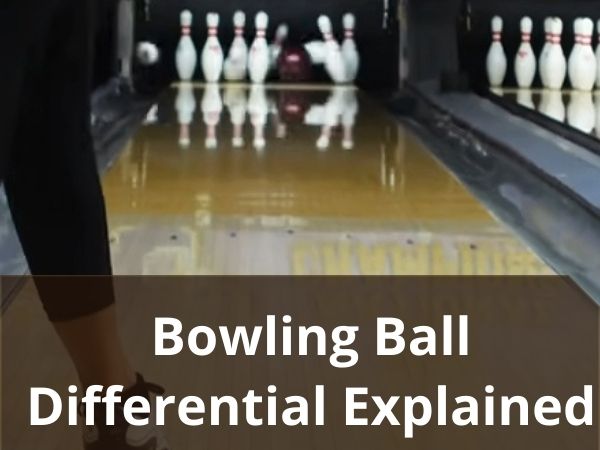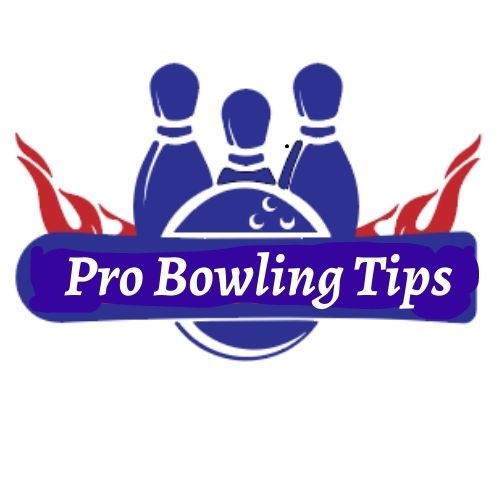
Do you understand how important Differential is when it comes to bowling balls? Clearly, it’s all about physics. Once you become a serious bowler, just throwing the ball, aiming for the targeted pocket, maintaining a perfect angle, etc are no longer enough.
You need in-depth knowledge regarding bowling ball dynamics. Every move your bowling ball makes and the reasons behind it are profoundly important to know. This is why learning about Differential is absolutely unavoidable even if it seems a bit too complicated. Here, we will mainly focus on the bowling ball differential. So hang in there fellas! Here’s everything you need to know about the differential in bowling.
What Does Differential mean in Bowling?
By definition, the differential in a bowling ball is the difference between the maximum and minimum RG (radius of gyration). The X-axis and Y-axis of the bowling ball’s weight block indicate the differential. From the RG-differential of a bowling ball, you can tell the track flare potential.
Differential Values and Their Meanings
Differential rating is sometimes defined as Mass Bias Rating. Both symmetrical and asymmetrical bowling ball has Mass Bias Differential, which is commonly known as “Differential”. However, the asymmetrical bowling ball has an Intermediate differential which we will get to in a bit.
The differential is defined as the difference between the maximum and minimum RG. As the Differential of a bowling ball tells you the flare potential of the ball. This will tell how much overall hook your bowling ball will have. The differential measurement/values determine whether the bowling ball’s flare potential is high, medium, or low.
The higher the differential of a ball, the more the ball will flare on the lane. The lower the differential, the less the ball will have its overall hook.
Generally, the numerical differential value ranges between 0.000” and 0.060”.
000” – 0.025” differential = Lower Flare Potential
0.026” – 0.046” differential = Medium Flare Potential
0.047” – 0.060” differential = Higher Flare Potential
Differentials denote the versatility of bowling balls. You can tell a lot by just the differential of a bowling ball. The reason bowlers keep saying that the differential is so important is that you can estimate how much length adjustment is required before drilling your bowling ball. The way you drill your ball affects the bowling ball’s performance. Hence knowing the values and the meanings of differential is paramount.
Low Differential vs High Differential
As mentioned earlier, the low value of differential indicates lower flare potential, and the higher value of differential denotes a higher flare potential. So when you will find more flare in a ball, the more the bowling ball coverstock will touch the surface of the lane. As a result, more friction will take place. With more friction on the lane, your bowling ball is going to hook sooner.
So what will happen when a bowling ball has a low differential? Well, it will have low flare and it is going to create less friction by touching the lane surface less. So in that case, you won’t see an earlier hook. Instead, a low flare bowling ball will provide more lengths as it rolls over using the same part of the coverstock surface. Simply put, more surface equals more friction, and less surface equals less friction, delivering more length on the bowling lane.
Interestingly, Low differential bowling balls are comparatively more stable due to their less generation of track flare. Because these balls have low flare potential, controlling these bowling balls is a bit easier. Oppositely, bowling balls with high differentials generate larger flare which makes the ball has a high flare potential and a bit less stable.
Balls with low differential values promote basic length adjustments. On the other hand, a high differential ball might allow length adjustments 5-times more than a low differential ball.
What is considered a Low differential bowling ball?
If you carefully look at the bowling ball’s specifications, you will often come across various numerical values. Sometimes, both differential values and flare potential is mentioned. Sometimes only one of these two is mentioned. If a bowling ball has a 000” – 0.025” differential value, it means it is a low differential bowling ball. And because it is a low differential bowling ball, it has Lower Flare Potential. Here are some of the best low differential bowling balls, in case you’re looking for one.
1. Hammer Arson Low Flare Bowling Ball
2. Pyramid Pathogen Plague Urethane Bowling Ball
3. Storm Pitch Black Solid Urethane Bowling Ball
4. Roto Grip Hustle Camo Solid Bowling Balls
5. Ebonite Futura Bowling Ball
What is considered a High differential bowling ball?
Typically, the bowling balls will high differential and tend to hook later but are stronger. You can see the specs indicating that a bowling ball has a high differential value or just mentioning the ball has a high flare potential. These are the ball that is considered high differential bowling ball.
1. Storm Proton Physix Bowling Ball
2. Brunswick Zenith Bowling Ball
3. Storm Hy-Road Urethane Bowling Ball
4. Hammer Obsession Bowling Balls
5. Ebonite Game Breaker 4 Bowling Ball
Conclusion
So there you go, fellow bowlers! These are all you need to know about the differential in bowling. Having knowledge about RG and Differential is an essential chapter of bowling. If you are interested to know more about bowling ball dynamics, bowling ball differential is a great way to gain some knowledge. I hope this article was informative enough for you to know what you were looking for. Good luck and never stop bowling!

Passionate Bowler and Bowling Enthusiast
Jess Pinelli is a dedicated bowling enthusiast with a deep love for the sport that spans over 6 years. With numerous strikes, spares, and a few gutter balls under hes belt, he has honed his skills on lanes across the country. Pinelli’s journey in the world of bowling has been a remarkable one, from casual weekend games with friends to competitive league play and even a few local tournaments.
Driven by her passion for the game, Pinelli decided to channel her expertise and knowledge into the digital realm, becoming a prolific author on this bowling website. She’s your go-to source for everything bowling-related, from mastering the perfect hook to choosing the right bowling ball and even navigating the world of bowling etiquette.
When she’s not busy writing informative articles or reviewing the latest bowling gear, you’ll likely find Pinellis at her favorite local bowling alley, helping newcomers improve their game or enjoying some friendly competition with fellow bowlers. She firmly believes that bowling is not just a game but a community, and she’s committed to fostering that sense of camaraderie both online and offline.



